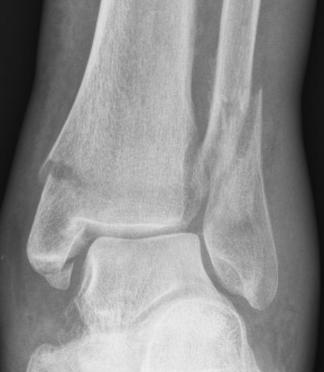WHAT IS AN ANKLE FRACTURE?
The two main bones of the ankle that are most commonly fractured are the distal tibia and fibula. Other bones of the ankle that can be fractured are the talus and the calcaneus. Acute fractures of the leg and ankle, especial those of the tibial shaft, may exhibit gross deformity. Other fractures may present with more subtle findings that may mimic those of a sprain. Fractures that occur over time are called stress fractures and can occur in any of the bones listed above.
 Distal tibia and fibula fracture
Distal tibia and fibula fracture
History
Inspection
May or may not present with visible deformity. Swelling and ecchymosis may be present.
Palpation
Point tender, possible crepitus, possible deformity
Range of Motion
- Pain: Sharp and Localized
- Onset: Acute
- Mechanism: Direct blow, eversion, or inversion
Inspection
May or may not present with visible deformity. Swelling and ecchymosis may be present.
Palpation
Point tender, possible crepitus, possible deformity
Range of Motion
- AROM: Assess patients willingness to move
- PROM: Do not perform if fracture is suspected
